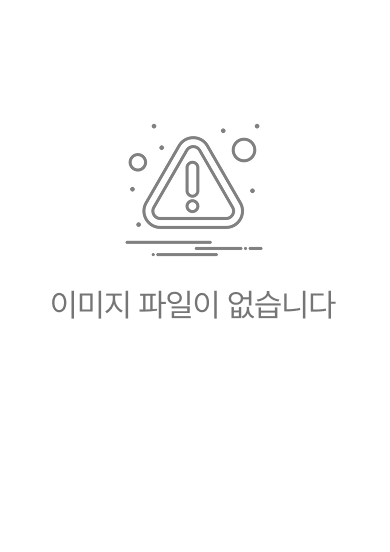

-
미리보기
서지정보
· 발행기관 : 경성대학교 산업개발연구소
· 수록지 정보 : 산업혁신연구 / 30권 / 3호 / 47 ~ 72페이지
· 저자명 : 박상준, 이영란
초록
구전은 마케팅 커뮤니케이션 수단의 하나로 인식되고 있다. 구전에 관한 선행연구들은 구매경험이 있는 소비자에 의한 구전효과만으로 한정하여 연구해 왔다. 그러나 구매 경험이 없는 소비자에 의한 구전효과도 존재할 가능성이 있다. 즉, 구매 경험이 없다고 하더라도 다양한 정보원(예: 인터넷, 광고 등)을 통해서 얻게 된 정보를 토대로 해당 제품(또는 서비스)에 대한 자신만의 의견을 갖게 되고, 이를 주변사람들에게 전달하는 경우가 현실에 존재한다. 그럼에도 불구하고 비구매자의 구전효과에 대한 실증연구는 전무한 실정이다. 본 연구에서는 구매자의 구전효과와 비구매자의 구전효과를 나누어서 비구매자의 구전효과가 존재하는지 그리고 구매자의 구전효과와 비구매자의 구전효과가 어떻게 다른지 연구하고자 하였다.
실증분석은 두 차례(STUDY 1과 STUDY 2)에 걸쳐 진행되었는데, STUDY 1에서는 구매자의 설득과 비구매자의 설득 상황에서의 구매의도를 비교하여 설득자 유형별 구전 효과를 확인하였다. 분석 결과, 구매자의 구전효과는 통계적으로 유의하였으나 비구매자의 구전효과는 통계적으로 유의하지 않은 것으로 나타났다. STUDY 2에서는 비구매자의 구전효과를 보다 정교하게 검증하기 위해서 비구매자의 1회 설득 상황과 비구매자의 3회 설득상황에서의 구전효과를 비교 분석하였다. 분석 결과, 비구매자가 1회 설득하는 경우에는 구전 효과가 통계적으로 유의하지 않았으나 비구매자가 3회 설득하는 경우에는 구전 효과가 통계적으로 유의한 것으로 나타났다. 요약하면, 두 차례의 실험결과는 비구매자의 구전효과가 구매자의 구전효과보다 작더라도 비구매자가 반복적 설득하는 경우에는 비구매자의 구전이 다른 소비자들의 구매의도에 영향을 미칠 수 있음을 보여주었다. 이러한 연구결과는 기업입장에서 자사의 제품을 구매한 구매자들의 구전에 대한 관리의 중요성을 제기하는 기존연구와 달리 비구매자를 대상으로 하는 구전효과 관리 프로그램을 운영할 필요가 있음을 시사한다.영어초록
Word-of-Mouth(WOM) is the passing of information from person to person by communication. Storytelling is a common form of the WOM. The WOM is an important communication tool because it often exerts a strong influence a consumer’s judgement on a product (or service) when a consumer strongly changes his (or her) behavior and he (or she) becomes immune to traditional means of marketing communications such as advertising. Therefore it is important for marketers first to understand why WOM plays such an important role in consumer’s purchase decision and, at the same time, and to find which element makes WOM conversation the most attractive form of communication.
Previous researchers gave attention to WOM as a mechanism through which consumers who bought a product (or service) influences fellow consumers’ product evaluations and purchase intentions, and they showed that consumers often incorporate other consumers’ opinions when forming an evaluation of a product (or service). WOM effects might be different by the types of persuaders (purchasers vs. non-purchasers). However, the current body of research did not give attention to the WOM effects that are different by various types of persuaders in the marketplace. In this study we tried to investigate whether or not potential customers are influenced by the WOM by non-purchasers as well as by purchasers, and whether or not the WOM effects by non-purchasers are different with those by purchasers.
In study 1, we explored if the WOM effects are different by the types of persuaders (purchasers vs. non-purchasers). In order to the empirical test, 84 participants were gathered and distributed in the experimental conditions [3(types of persuaders: no persuasion, purchasers and non-purchasers): within-subjects × 4(types of products: notebook, sport shoes, fast food and books): within-subjects]. The results of study 1 showed that potential buyers are more positively affected by the WOM of a purchaser than by that of a non-purchaser. However, the WOM effect of a non-purchaser is not statistically significant. Therefore, we conducted the subsequent experiment to more carefully explore the WOM effects of non-purchasers. For the experiment goal we compared consumers’ purchase intentions under three persuasion situations: no persuasion, once persuasion by a non-purchaser, triple persuasions by a non-purchaser. Subjects were asked to their purchase intentions for four different products, such as notebook, sport shoes, fast food and books. The 94 participants were gathered and randomly assigned in the experimental conditions [3(types of persuaders: no persuasion, once persuasion by a non-purchaser, triple persuasion by a non-purchaser): between-subjects × 4(types of products: notebook, sport shoes, fast food and books): within-subjects]. The results showed that a consumer’s purchase intention under triple persuasions by a non-purchaser is greater than the purchase intention without persuasion. This means that non-purchasers’ WOM can enhance a potential consumer’s purchase intention. This study provides the empirical results that consumers’ decision making process is influenced by non-purchasers’ persuasions as well as purchasers’ persuasions.참고자료
· 없음태그
-
자주묻는질문의 답변을 확인해 주세요

꼭 알아주세요
-
자료의 정보 및 내용의 진실성에 대하여 해피캠퍼스는 보증하지 않으며, 해당 정보 및 게시물 저작권과 기타 법적 책임은 자료 등록자에게 있습니다.
자료 및 게시물 내용의 불법적 이용, 무단 전재∙배포는 금지되어 있습니다.
저작권침해, 명예훼손 등 분쟁 요소 발견 시 고객센터의 저작권침해 신고센터를 이용해 주시기 바랍니다. -
해피캠퍼스는 구매자와 판매자 모두가 만족하는 서비스가 되도록 노력하고 있으며, 아래의 4가지 자료환불 조건을 꼭 확인해주시기 바랍니다.
파일오류 중복자료 저작권 없음 설명과 실제 내용 불일치 파일의 다운로드가 제대로 되지 않거나 파일형식에 맞는 프로그램으로 정상 작동하지 않는 경우 다른 자료와 70% 이상 내용이 일치하는 경우 (중복임을 확인할 수 있는 근거 필요함) 인터넷의 다른 사이트, 연구기관, 학교, 서적 등의 자료를 도용한 경우 자료의 설명과 실제 자료의 내용이 일치하지 않는 경우
“산업혁신연구”의 다른 논문도 확인해 보세요!
-
An Effective Framework for Developing Medical Collaborative Systems 31 페이지
Collaboration errors may occur improper diagnosis and delayed or improper medical treatments. Current medical organizations still face increasing challenges to meet the collaboration needs in the dive.. -
한국 신협의 성장전략과 정체성 위기 30 페이지
한국 신협은 설립 이래 지금까지 고금리에 의존한 성장전략을 추구하고 있다. 이러한 전략에 힘입어 빠른 성장을 이룩할 수 있었지만 한국 신협은 이른 바 정체성 위기에 처해있다. 정보의 비대칭성이론은 역선택과 도덕적 해이를 완화하고 그리고 기대이익을 극대화하기 위해 금융기관은 시장균형이자율 이하로 유지해야 한다고 주장한다. 한국 신협은 고금리를 유지하였기 때문..
문서 초안을 생성해주는 EasyAI

